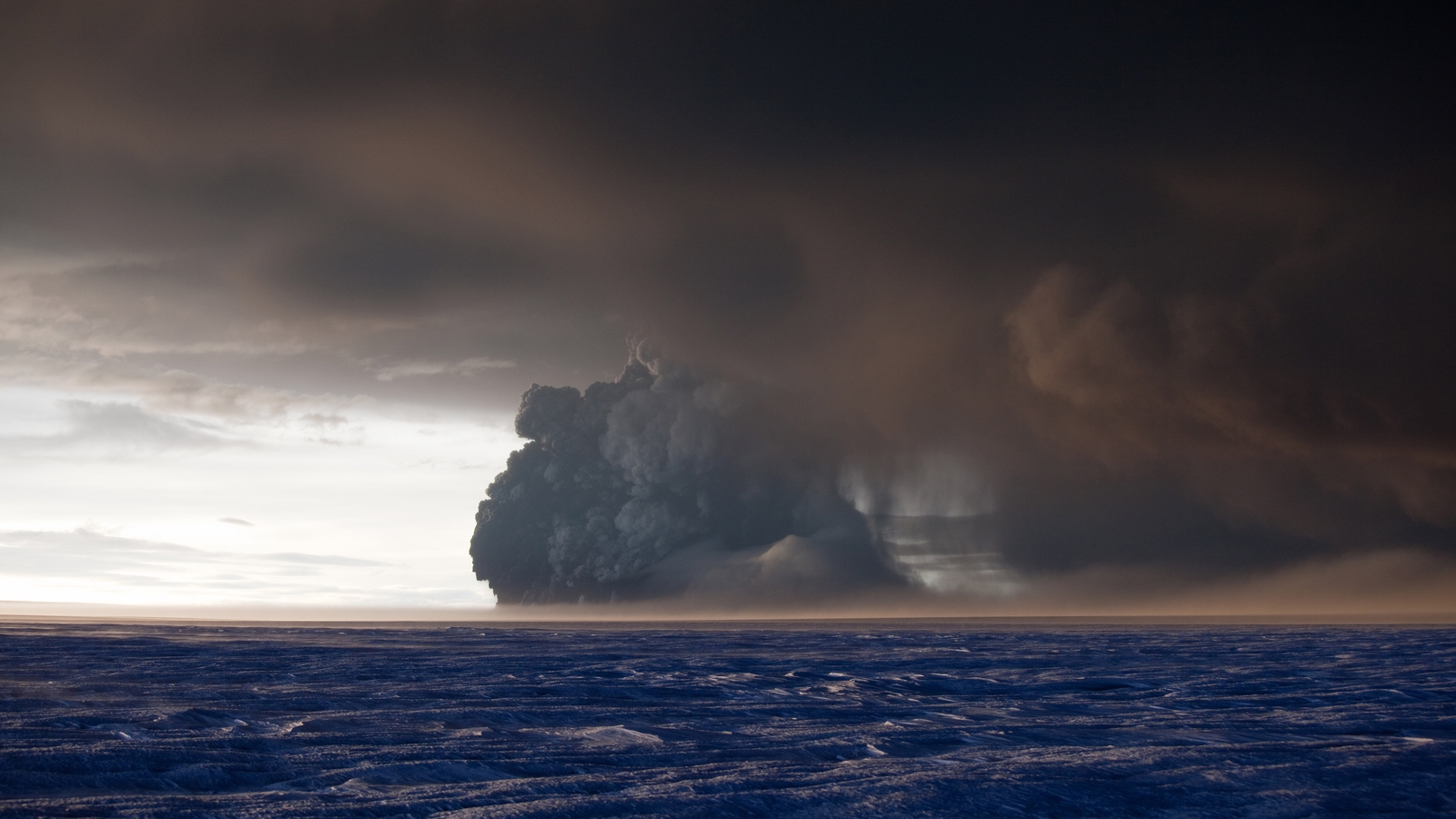Melodi
Disaster Cat
I'm posting this in case this one blows in the near future as Iceland thinks that it might...

 www.rte.ie
Iceland raises alert level for its most active volcano
www.rte.ie
Iceland raises alert level for its most active volcano
Updated / Monday, 6 Dec 2021 16:25

The eruption of the Grímsvötn volcano sent thousands of tonnes of volcanic ash into the sky on May 23, 2011 above Iceland
Iceland has raised the alert level for a possible eruption of its most active volcano after several small earthquakes were registered earlier today.
Located in an uninhabited and remote area of central Iceland, the Grímsvötn volcano is situated under a massive glacier.
Experts have been monitoring Grímsvötn for several weeks after its glacier lake burst, an event that could trigger a volcanic eruption.
In the latest eruption in 2011, an ash cloud caused relatively minor air traffic disruptions, when around 900 flights were cancelled.
That was considered minor compared to the eruption a year earlier of the Eyjafjallajökull volcano, which led to the cancellation of 100,000 flights and stranded 10 million passengers.
Today, the alert level for the Grímsvötn volcano was raised to "orange" from "yellow", due to "heightened seismic activity", the Icelandic Meteorological Office said on its website.
The colour code, designed to inform the aviation industry of the risk of an eruption, means the volcano "is showing heightened activity with an increased probability of eruption", according to the IMO's scale.
Code red means an eruption is considered imminent, with a strong likelihood that an ash cloud could cause significant disruption to air traffic.

Ash plume from Iceland's Eyjafjallajökull crater during it's eruption in May 2010 near Reykjavik, Iceland where ash cloud rose to an average of 6 km
Several quakes measuring a magnitude of up to 3.6 were registered today.
While seismic activity has increased over the past two days, no rise in the volcano's magma has been detected so far, the IMO said.
"This seismic activity may be due to the decreasing pressure above the volcano, as the floodwaters have been released from the subglacial lake," the IMO said.
A natural phenomenon known as "Jökulhlaup", the subglacial flooding began around two weeks ago and reached a peak early yesterday.
The IMO said measurements showed that the ice-cap on Grímsvötn's subglacial lake has subsided by about 77 meters.
The easing of pressure on the volcano, spurred by the flowing of millions of tonnes of water, can trigger an eruption. That was the case in 2004, 1934 and 1922.
Located under Iceland's biggest glacier Vatnajökull, Grímsvötn last erupted in 2011. Its recent eruptions have occurred every five to 10 years.

Iceland raises alert level for its most active volcano
Iceland has raised the alert level for a possible eruption of its most active volcano after several small earthquakes were registered earlier today.
Updated / Monday, 6 Dec 2021 16:25

The eruption of the Grímsvötn volcano sent thousands of tonnes of volcanic ash into the sky on May 23, 2011 above Iceland
Iceland has raised the alert level for a possible eruption of its most active volcano after several small earthquakes were registered earlier today.
Located in an uninhabited and remote area of central Iceland, the Grímsvötn volcano is situated under a massive glacier.
Experts have been monitoring Grímsvötn for several weeks after its glacier lake burst, an event that could trigger a volcanic eruption.
In the latest eruption in 2011, an ash cloud caused relatively minor air traffic disruptions, when around 900 flights were cancelled.
That was considered minor compared to the eruption a year earlier of the Eyjafjallajökull volcano, which led to the cancellation of 100,000 flights and stranded 10 million passengers.
Today, the alert level for the Grímsvötn volcano was raised to "orange" from "yellow", due to "heightened seismic activity", the Icelandic Meteorological Office said on its website.
The colour code, designed to inform the aviation industry of the risk of an eruption, means the volcano "is showing heightened activity with an increased probability of eruption", according to the IMO's scale.
Code red means an eruption is considered imminent, with a strong likelihood that an ash cloud could cause significant disruption to air traffic.

Ash plume from Iceland's Eyjafjallajökull crater during it's eruption in May 2010 near Reykjavik, Iceland where ash cloud rose to an average of 6 km
Several quakes measuring a magnitude of up to 3.6 were registered today.
While seismic activity has increased over the past two days, no rise in the volcano's magma has been detected so far, the IMO said.
"This seismic activity may be due to the decreasing pressure above the volcano, as the floodwaters have been released from the subglacial lake," the IMO said.
A natural phenomenon known as "Jökulhlaup", the subglacial flooding began around two weeks ago and reached a peak early yesterday.
The IMO said measurements showed that the ice-cap on Grímsvötn's subglacial lake has subsided by about 77 meters.
The easing of pressure on the volcano, spurred by the flowing of millions of tonnes of water, can trigger an eruption. That was the case in 2004, 1934 and 1922.
Located under Iceland's biggest glacier Vatnajökull, Grímsvötn last erupted in 2011. Its recent eruptions have occurred every five to 10 years.
